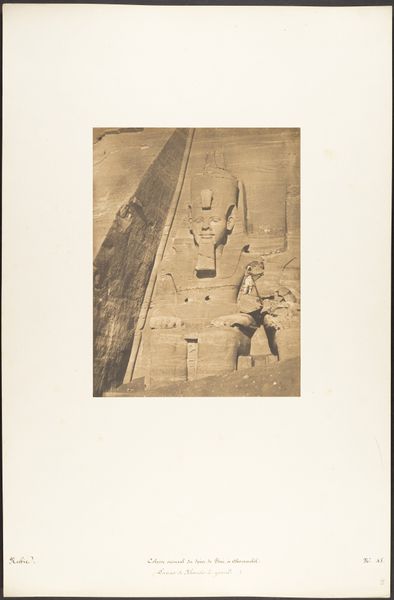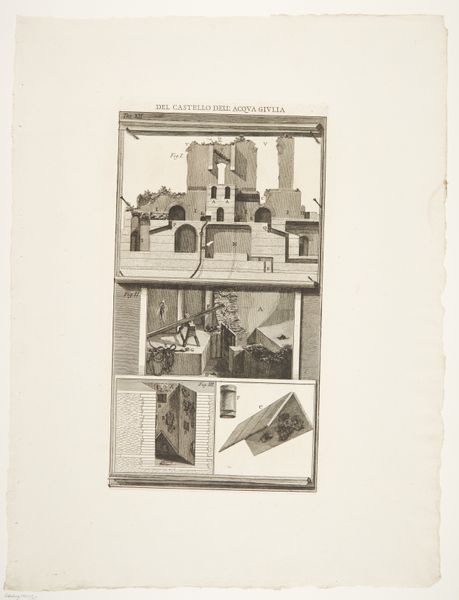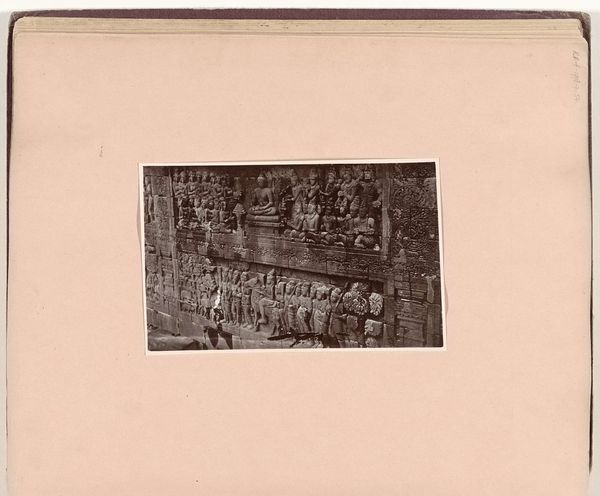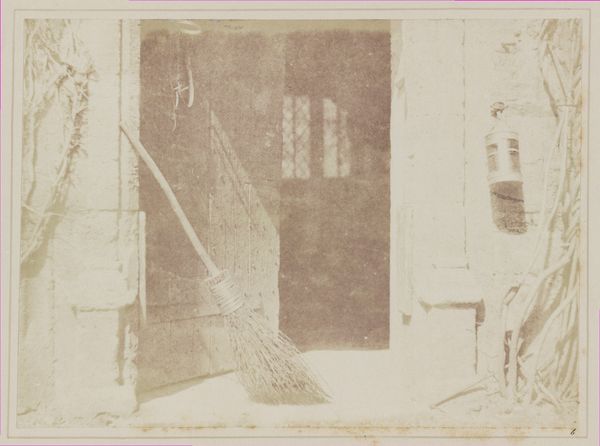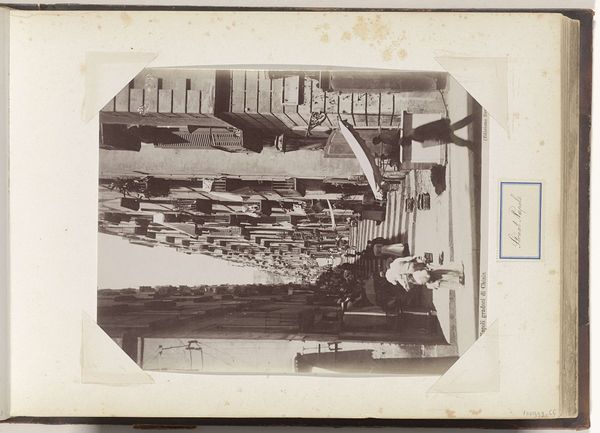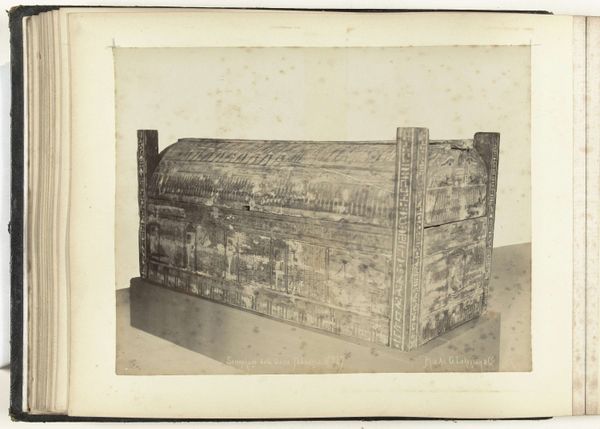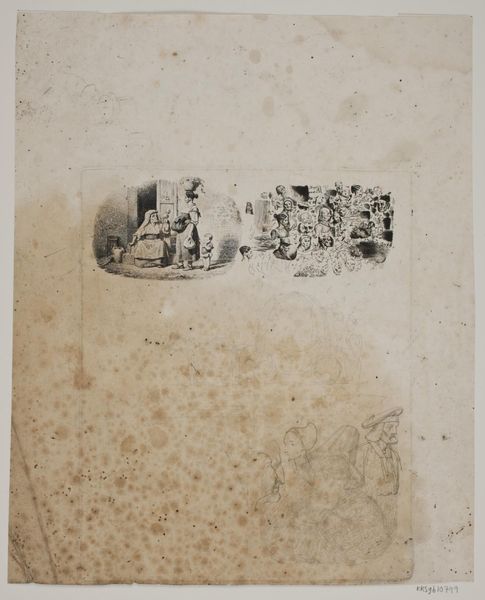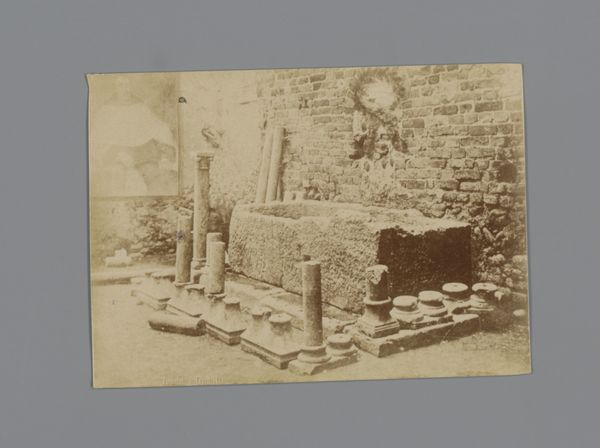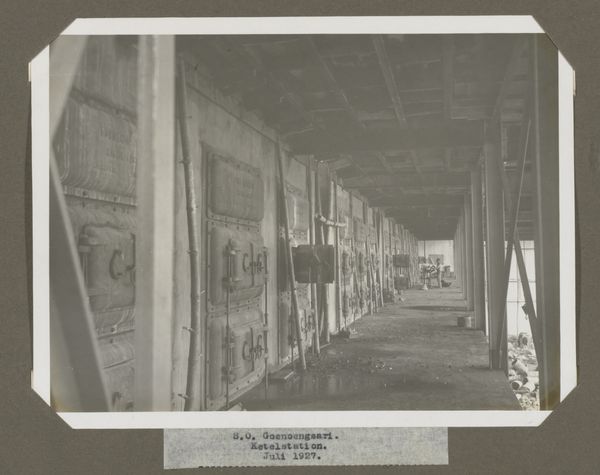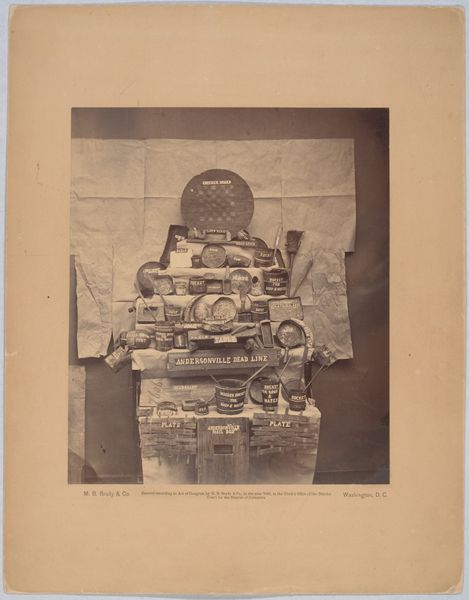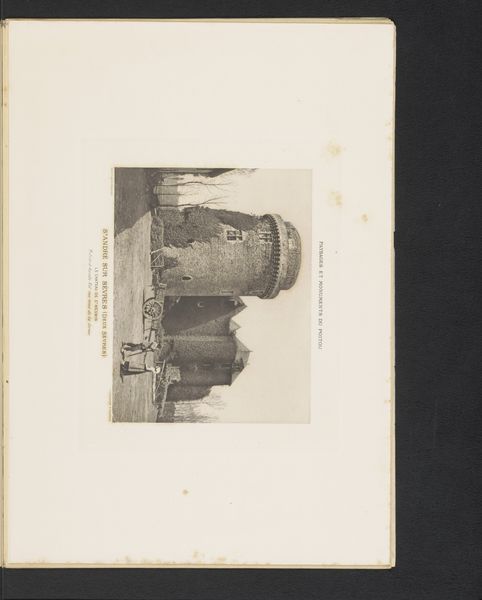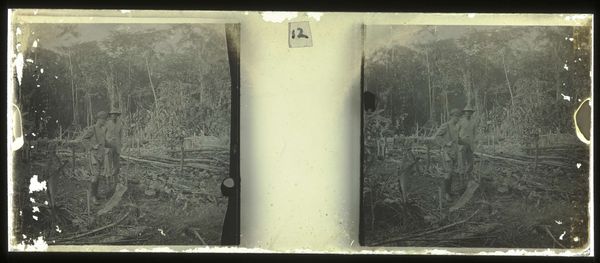
print, photography, gelatin-silver-print, albumen-print, architecture
# print
#
landscape
#
ancient-egyptian-art
#
photography
#
ancient-mediterranean
#
gelatin-silver-print
#
19th century
#
albumen-print
#
architecture
Dimensions: height 228 mm, width 286 mm, height 390 mm, width 560 mm
Copyright: Rijks Museum: Open Domain
Editor: Here we have Fèlix Bonfils’ "Restanten van de Luxortempel," taken before 1872, a gelatin-silver print at the Rijksmuseum. There’s a stark, almost desolate quality to the scene, a ruin presented with such precise geometry in the remaining structure. What stands out to you formally? Curator: Initially, it is crucial to address the print's materiality and Bonfils' methodology. We must closely consider the textural presence afforded by the gelatin-silver process—the ways it accentuates detail and form within a monochromatic scale. How does the light interact, not merely to depict the remnants of the temple, but to construct our apprehension of solidity versus erosion, of monumentality dissolving into dust? The frame, too, calls for attention. What lines and shapes are rendered around and on the photographic document itself? Editor: So, it’s not just the ruin depicted, but also the lines we see on the print itself. What are those lines doing? Curator: Precisely! The etched or drawn quality of these interventions introduces another stratum of form. These added elements challenge a purely documentary reading, inviting us to contemplate the artifice inherent in representation. Consider the geometry of these etched additions and how they play against the perceived authenticity of the photographic medium. How does this visual juxtaposition affect our interpretation of 'truth' in art? Editor: That's fascinating. It really pushes you to question what you're actually seeing. I wouldn't have noticed that level of complexity on my own. Curator: Indeed. Through attention to formal nuance—surface, light, and superimposed graphic elements—a seemingly straightforward landscape photograph becomes an intricate field of signification. Close looking, theoretically informed, reveals layers often unseen. Editor: I'm starting to see the temple itself differently now; it’s less about historical record and more about layers of form. Thanks so much!
Comments
No comments
Be the first to comment and join the conversation on the ultimate creative platform.
